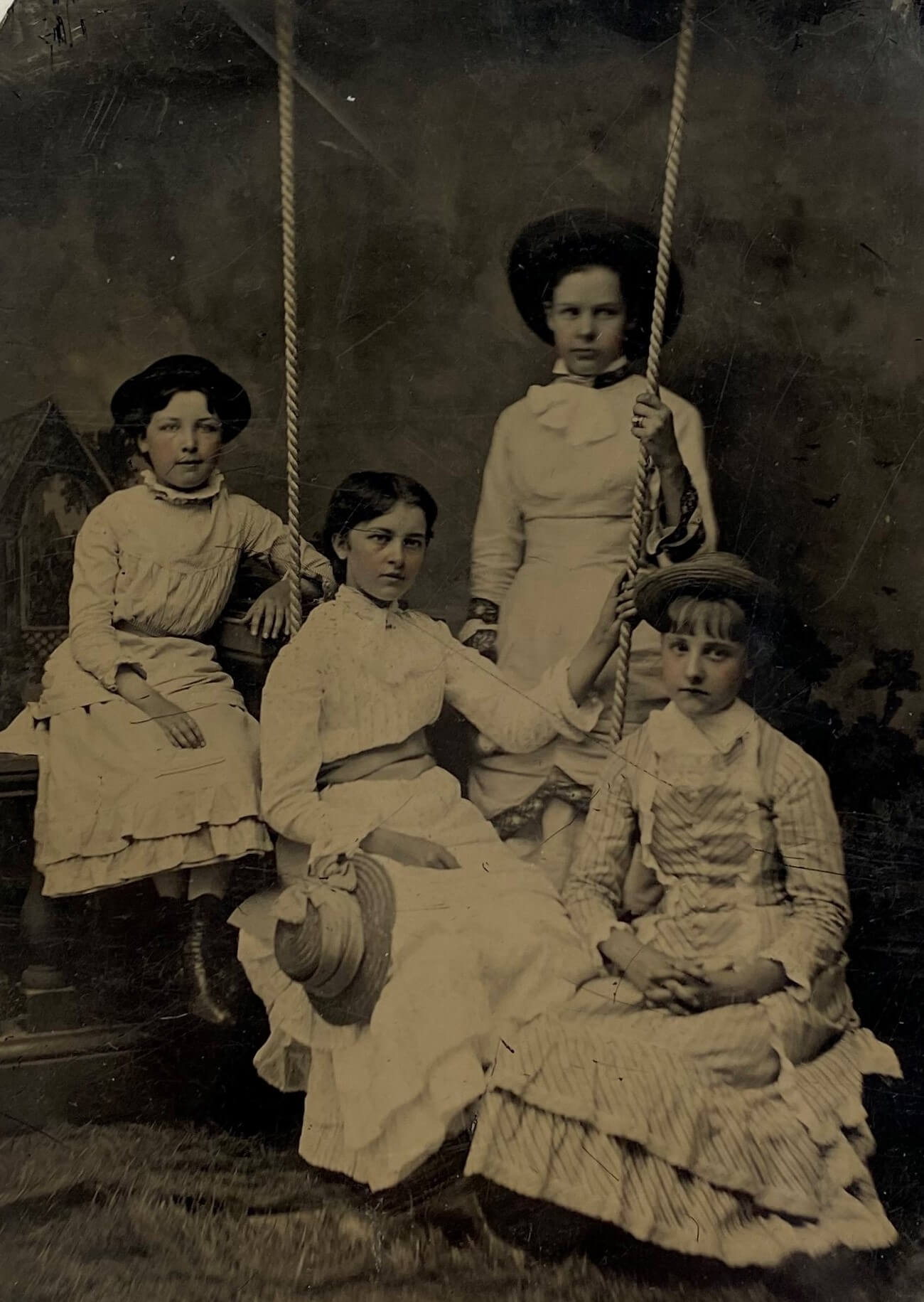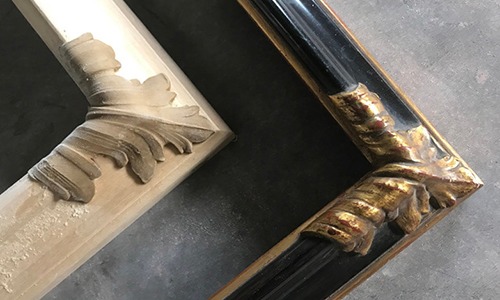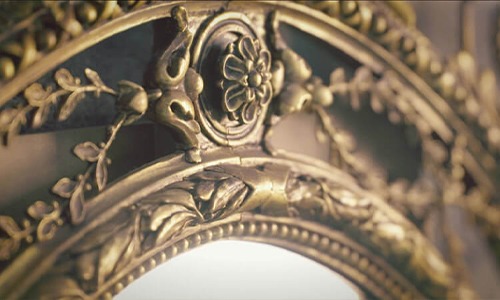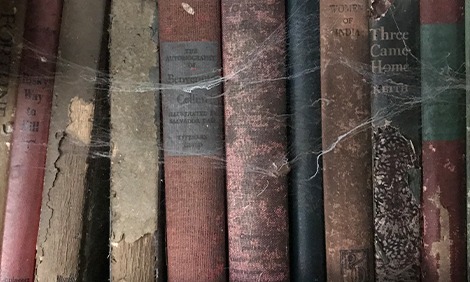Collection Care
Storage & Display of Photographs
By April Hann Lanford
Caring for Photographs
By April Hann Lanford
The category of photography, while it sounds specific, can include a vast amount of variables. Since the late 19th century, photographs have evolved from Daguerreotypes to tintypes, albumen prints, to silver gelatin prints, and color photographs.
Retouching
In the 19th century, images were often retouched by hand to improve details that were lost in the exposure, or the image improved with the addition of highlights or shadows. In the late 19th century, portraits on paperboard were often retouched in charcoal and pastel. Prior to color photography, it was common to apply color by hand to photographs. In the mid-twentieth century, color photographs were often retouched to disguise blemishes by portrait studios. While an image may be initially viewed as a photograph, it should be kept in mind that there might also be work completed by hand to achieve the desired final image.

Storage
Photographs should be handled with care, as their sensitive surfaces can be easily damaged from mishandling. Photographs should be stored in a climate-controlled environment, temperature 68-70 degrees. The relative humidity should be maintained at the range of 30%-40%. Photographs are very sensitive to moisture and should never be stored in a basement.
Polypropylene Sleeves
Archival polypropylene sleeves are an affordable option to store images. The clear sleeves protect the images from direct handling and dust while accommodating a full view of each piece. The sleeved images can be housed in an album or can be placed in an archival box. Sleeves can be labeled with the photograph’s information.
If an image has charcoal or pastel elements, it should not be placed in sleeves and should be housed in archival bookmats.

Archival Rag Board Mats
Photographs can also be housed in archival rag board bookmats.
Made of 100% cotton rag board, photographs can be mounted within a bookmat to allow for extra rigidity to support the print, and it also provides a nice presentation for the piece. Collectors and museums often have the mats created in one size and which allows for the pieces to be easily fit and stored together into a corresponding sized archival box. The mats can be easily labeled with information about the photograph it houses without having to label the piece itself.
Given the light sensitivity of photographs, they are often rotated on display. Storing them within mats, allows for the works to be easily installed in corresponding sized frames, and put on display.
Sage advice-Avoid directly labeling the piece itself.
When documenting the photograph, it is best to avoid adhering to a pressure-sensitive label to the back or writing directly on the surface. Never use pens or markers. Inks can bleed through the image, can smear onto a secondary piece, or can complicate conservation efforts in the future.
Even the pressure of a pencil tip can strike through the front from the back, resulting in disfigurement of the image.
Framing
Photographs are sensitive to UV light and are vulnerable to fading. It is imperative that when they are framed and on display, they should always be housed with UV filtering glazing. Glazing options such as Museum Glass, Optium Acrylic, Conservation Clear Glass, and Acrylic, all block up to 99% of UV rays. When framed, photographs should never be framed so that they are directly against the glass. A rag board mat or a spacer can be used to create a space between the surface of the photograph and the interior of the glazing. A moisture-resistant backing board should be used to further protect the piece while on display in the frame.

When cleaning the glazing on a framed photograph, always spray the cleaner with a microfiber cloth and then clean the glazing.
Never spray cleaner directly onto the surface, as it could potentially damage the frame finish, as well as seep into the frame package and cause damage along the lower edge of the mat or the photograph.
The image to the left shows a classic example of damage caused by seepage from glass cleaner.
Please note that even when photographs are framed with UV filtering glass, they are still vulnerable to prolonged exposure to UV. Collectors should create a schedule to have such works rotate on display and allow time for the works to “rest” in storage, in order to enjoy the piece while ensuring its longevity.
Working with a specialist can confirm the optimal approach to the care and presentation of your collection.
If you have any questions about the care or framing of your piece, please call:
312-344-0331
April@artifactservices.com
Our collection of educational articles about
custom framing, collection care, and emergency response are updated regularly.
Click on each topic below for a menu of corresponding articles.
Collection Care Articles
By April Hann Lanford
Our collection of educational articles provides an introduction to many topics about the preservation and conservation of fine art, antiques, and fine furniture.
Topics are often written as a result of questions provided by our clients.
Emergency Care Articles
By April Hann Lanford
Our emergency care articles are a helpful introduction to how to prevent damage through preventative measures or art and antique collections. When a disaster strikes, prompt response and taking the right steps can mitigate further damage.
Antique Trader Articles
By April Hann Lanford
Visit our collection of articles that have been published in Antique Trader.
antiquetrader
For more than 60 years Antique Trader has been inspiring, informing, and entertaining the collecting community with timely...
Projects
By April Hann Lanford
A selection of Artifact’s most recent projects highlighting our conservation and preservation work. We present each unique story describing the conservation process from reviewing the history, cause of loss, and condition to the steps of the treatment.
Glossary
A collection of art and conservation terms along with makers and firms compiled into a glossary and highlighted throughout our website for reference.
We are available to assist you
Main Location
840 N. Milwaukee Ave, Chicago IL 60642
Mon-Fri: 9:00 am - 5:30 pm
Sat: 10:00 am-4:00 pm
Sun: Closed
Complimentary parking is available in the loading zone in front of the building
We can also serve you by appointment at our other locations in the Chicagoland area.
Additional Locations
Schiller Park • Highland Park • Lake Forest • Lincoln Park • Nashville, TN
Copyright 2024, Artifact Services, LLC | An Artmill Group Company





